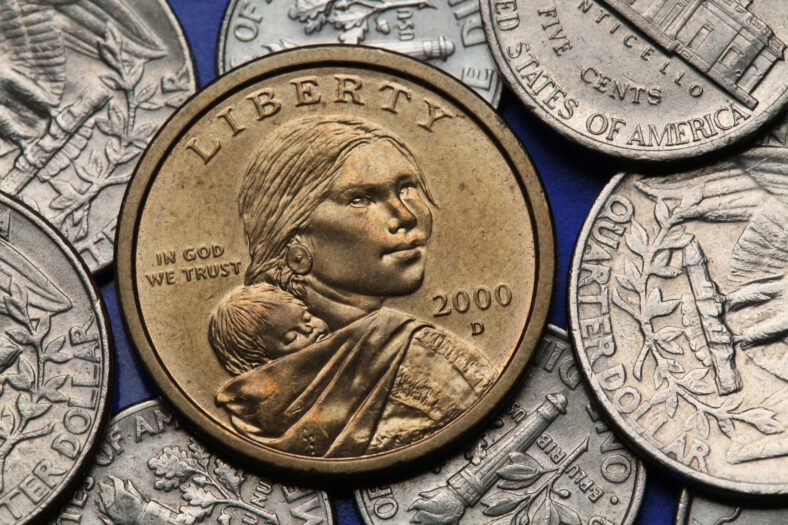What They Didn’t Teach You In School About Sacagawea

Many of us learned about the expedition of Captain Meriwether Lewis and Lieutenant William Clark and the help they received from Sacagawea during our school years. But how much do you know about the life of Sacagawea and her crucial involvement in the famous expedition?
Sacagawea was born around 1788 near the border of Idaho and Montana. She was born a member of the Lemhi Shoshone tribe but was captured at 12-years-old by an enemy tribe, the Hidatsa.
After she was captured, a French-Canadian trader living amongst the Hidatsa named Toussaint Charbonneau claimed her as one of his wives.
After the Louisiana Purchase was made by President Thomas Jefferson, Meriwether Lewis, and frontiersman William Clark were hired to explore the western land the country had acquired in 1803.
During the winter months of their expedition, Lewis and Clark chose to set up their camp near the Hidatsa tribe villages in Fort Mandan, which was how they met Toussaint and, eventually, Sacagawea.
Sacagawea was pregnant with her first child when Toussaint was brought into Lewis and Clark’s expedition as an entrepreneur since he knew the sign languages commonly used by the Native American tribes who lived along the Missouri River river.
This was when Lewis and Clark realized how valuable Sacagawea would be on the expedition, as they anticipated needing to communicate and trade with the Shoshone tribe.
Since she was still pregnant, Lewis, Clark, and the dozens of men they brought on their expedition camped out for the entire winter between 1804 and 1805 until she gave birth to her son, Jean-Baptiste Charbonneau, and could travel.
When she was only a teenager, Sacagawea left Fort Mandan as the only woman in a large group of men with a young baby on her back to guide them through their expedition on April 7th, 1805.

Sign up for Chip Chick’s newsletter and get stories like this delivered to your inbox.
Although Sacagawea was mostly utilized as a primary guide through the Idaho and Montana regions of the expedition, she was a crucial member of their unit, the Corps of Discovery.
She helped them find edible plants to eat, made clothing, translated the Shoshone and Hidatsa languages, and was a calm and level-headed presence.
At one point on their journey, the boat she and Toussaint were traveling in began to capsize. Instead of panicking, she calmly gathered all valuable items on the boat, like documents, books, and medicines, to keep them safe before returning to safety.
On August 15th, 1805, the expedition encountered the Shoshone tribe while traveling up the Missouri River. That day, Sacagawea was reunited with her brother, Cameahwait, who had become chief.
Through their beautiful reunion, she convinced the tribe to provide additional horses and guides to the expedition.
Toward the end of the expedition, Lewis and Clark began taking more of Sacagawea’s advice on what routes to take. She and her family returned to the Mandan-Hidatsa villages in 1806 and officially left the expedition.
Unfortunately, there isn’t much information on Sacagawea’s life after the expedition. When her son turned five, she and Toussaint brought him to St. Louis, Missouri, and left him with Clark, who cared for him and gave him an education.
Sacagawea was said to have given birth to a daughter named Lisette in 1812. Although there is no specific documentation that details the end of her life, some historical figures recorded that she died due to illness that same year.
Sacagawea will always be remembered for her bravery and the services she did, which were invaluable to American history.
More About:Chicks We Love





